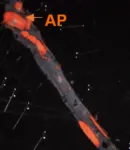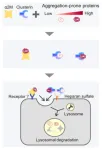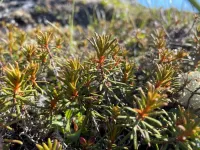(Press-News.org) The freely available compliance checker will use natural language processing to automatically assess scientific manuscripts for the information in the ARRIVE Essential 10, a checklist of the most important details to include in any publication describing animal research.
A major factor influencing the reliability and reproducibility of animal experiments is how transparently they are reported. The ARRIVE guidelines help researchers improve the reporting of animal studies by clearly laying out the information that should be included in a manuscript. Reporting animal experiments in line with the ARRIVE guidelines is a requirement of research funding organisations worldwide, including all major UK animal research funders, and the National Institutes of Health in the USA.
Assessing a manuscript’s compliance with ARRIVE is a valuable way for researchers and journals to identify when key information is missing from it. At present, ARRIVE compliance assessment can only be performed manually, using the ARRIVE compliance questionnaire. Automating this process will facilitate the inclusion of ARRIVE assessments in journals’ manuscript workflows, as well as the auditing of reporting practices by funding organisations or universities.
The compliance checker will be developed by the ScreenIT consortium, a group of developers led by SciCrunch, a California-based company focused on initiatives to improve research reproducibility. SciCrunch develop and operate platforms such as the Resource Identification Initiative, the Antibody Registry, and SciScore, a popular scientific manuscript review tool that uses the same technology that will be implemented in the ARRIVE compliance checker.
Dr. Nathalie Percie du Sert, head of experimental design and reporting at the NC3Rs, said:
“We are delighted to work with SciCrunch and colleagues to develop such an important tool for the research community. The automated ARRIVE checker will provide researchers, journals and reviewers with a freely-accessible tool to check that manuscripts are not missing critical information and it will allow us and other stakeholders to monitor improvements in the reporting of animal research.”
Dr. Anita Bandrowski, CEO of SciCrunch, said:
“The ARRIVE guidelines are a very important tool for improving the reporting of animal research, we are very pleased to be developing the compliance checker, which will help make their use easier for the community. At the same time, we’re glad to be able to take this opportunity to add ARRIVE compliance checks to SciScore, making ARRIVE assessment functionality available to the large number of journals who already use SciScore.
The compliance checker will be available via the ARRIVE guidelines website in 2025. Before that, ARRIVE compliance checking functionality will be added to SciScore in 2024.
- Ends -
About the group developing the compliance checker
The ScreenIT consortium is a group of developers led by SciCrunch. They are joined by:
Dr Tracey Weissgerber, Berlin Institute of Health at Charité – Universitätsmedizin Berlin, a data visualisation and reproducibility expert who has created several automated tools that screen figures and images.
Dr. Malcolm Macleod, University of Edinburgh, an expert in preclinical research reproducibility whose team have curated large, annotated, gold standard manuscript datasets that will be used to train the compliance checker
Dr. Iain Marshall, King’s College London, co-leader of the RobotReviewer project, a machine learning system that automates evidence synthesis in systematic reviews.
About the NC3Rs
The National Centre for the Replacement, Refinement and Reduction of Animals in Research (NC3Rs) is a leading independent scientific organisation dedicated to replacing, refining and reducing the use of animals in research and testing (the 3Rs). It supports the UK science base by driving and funding innovation and technological developments that minimise the need for animals in research and testing, and lead to improvements in welfare where animals continue to be used. It funds research, supports training and development, and stimulates changes in regulations and practice.
Further information can be found at: www.nc3rs.org.uk @nc3rs
About the ARRIVE guidelines
The ARRIVE guidelines are a checklist of recommendations to improve the reporting of experiments involving animals. Reporting in vivo experiments in line with ARRIVE helps to ensure that manuscripts contain enough information to add to the knowledge base. The guidelines are prioritised into two sets: the ARRIVE Essential 10, the basic minimum information to include in a manuscript, without which readers cannot assess its reliability; and the Recommended Set, which add important context to the study. They are accompanied by extensive explanation and elaboration information, which ensures that the items are easily understood, and provides useful information on rigorous experimental design in animal studies.
Reporting in compliance with ARRIVE is required or recommended by many important research funders, journals and universities worldwide. These include all major UK animal research funders, and the National Institutes of Health in the USA.
The guidelines, more information and resources for using them, can be found at: www.arriveguidelines.org
END
Developing an AI tool to check ARRIVE compliance
A new tool will streamline manuscript checks to ensure that animal research is transparently reported
2023-05-11
ELSE PRESS RELEASES FROM THIS DATE:
Louisiana Cancer Research Center’s “Promising Practices Conference” seeks public and community involvement to help reduce cancer rates in Louisiana
2023-05-11
The Louisiana Cancer Research Center (LCRC) is stepping up its statewide efforts to reduce the state’s extraordinarily high cancer rates by enlisting the help of the public and communities. The LCRC’s newly established Office of Community Outreach and Engagement (OCOE) is convening an all-day “Promising Practices Conference” on Friday, June 2 at Louisiana Tech University and online to highlight the resources and assistance that are available to support better health and wellness throughout Louisiana and strategize on ways to overcome challenges. There is no charge to attend the conference, which is presented by the LCRC in collaboration with ...
High-fat diet ‘turns up the thermostat’ on atherosclerosis
2023-05-11
In a recent study, researchers determined that derivatives of natural emulsifiers such as phospholipids found in high-fat, high-cholesterol diets can promote atherosclerosis via gut bacteria interactions with the immune system. This study could pave the way for targeted interventions for individuals who are at risk for developing heart disease.
Obesity and a high-cholesterol, high-fat diet are both well-established risk factors for atherosclerosis. In fact, obese individuals are two and a half times more likely to develop heart disease. ...
Supergenes helped bring invasive plant to Norway
2023-05-11
The common ragweed plant (Ambrosia artemisiifolia) has spread rapidly in Europe and has intensified the pollen season for many allergy sufferers. Now the plant has arrived in Norway.
Common ragweed can extend Norway's pollen season into November, but fortunately the species is struggling in this country.
“Common ragweed can be found in Norway, but for now it has no stable populations,” says Vanessa Carina Bieker, a postdoc at the Norwegian University of Science and Technology's (NTNU) ...
How “extracellular chaperones” help remove abnormal proteins
2023-05-11
Proteins tend to fold wrongly and become defective when exposed to stressors such as heat, oxidation, and pH changes. Accumulation of abnormal proteins contributes to neurodegenerative diseases like Alzheimer’s.
So, how does the human body deal with such misfolded or defective proteins? It regulates protein networks via a process called ‘proteostasis,’ which prevents protein aggregation and any damage that may result from misfolded protein accumulation inside (intracellular) or outside (extracellular) cells. A set of unique proteins—molecular chaperones—play an essential role in proteostasis: they target and interact with misfolded proteins, maintain their solubility, ...
Therapy sessions benefit mothers, children in homeless shelter
2023-05-11
Short-term therapy sessions with parents and their children in homeless shelters could help improve parenting skills and reduce parental stress and children’s post-traumatic stress symptoms, according to a pilot study published by the American Psychological Association.
Researchers from Florida International University partnered with Lotus House in Miami, one of the largest women’s homeless shelters in the U.S. The study included 144 families (mother and one child) with children from 18 months to 5 years of age. The research was published online in the Journal ...
Sleep apnea associated with increased risk for long COVID
2023-05-11
Sleep apnea may significantly increase the risk for long COVID in adults, according to a study led by the National Institutes of Health’s RECOVER Initiative and supported by NYU Langone Health as home to the effort’s Clinical Science Core (CSC).
As of April 2023, more than 100 million Americans had been infected with the virus that causes COVID-19. As of April the U.S. Government’s Household Pulse survey estimated that about 6 percent of U.S. adults are experiencing symptoms associated with long COVID, including brain fog, fatigue, depression, and sleep problems. ...
A dangerous eye infection from tainted eye drops, months before the CDC’s warning
2023-05-11
HIGHLIGHTS
Pseudomonas aeruginosa is a pathogenic and drug-resistant gram-negative bacterium
The CDC advised against using some artificial tear eye drops that were contaminated with the microbe
In November 2022, doctors in Cleveland diagnosed a patient with a corneal ulcer with a P. aeruginosa infection
The patient acquired the infection from tainted eye drops months before the CDC’s February 2023 warning
Washington, DC – In February 2023, the Centers for Disease Control and Prevention warned people against using EzriCare eye drops because bottles of the product had ...
Brigham experts provide insights on how Alzheimer’s drug lecanemab slows cognitive decline
2023-05-11
WHO: Dennis Selkoe, MD, co-director of the Ann Romney Center for Neurologic Diseases at Brigham and Women’s Hospital and corresponding author of the paper in Neuron. Andrew Stern, MD, PhD, of the Ann Romney Center for Neurologic Diseases at BWH and first author of the paper in Neuron
WHAT: In a report published in Neuron, a team led by investigators from Brigham and Women’s Hospital reveals the structure of the therapeutic target of lecanemab, a drug approved by the US Food and Drug Administration in January 2023 for the treatment of Alzheimer’s disease. While the ...
Traditional medicine plant could combat drug-resistant malaria
2023-05-11
Much of what is now considered modern medicine originated as folk remedies or traditional, Indigenous practices. These customs are still alive today, and they could help address a variety of conditions. Now reporting in ACS Omega, a team of researchers have identified compounds in the leaves of a particular medicinal Labrador tea plant used throughout the First Nations of Nunavik, Canada, and demonstrated that one of them has activity against the parasite responsible for malaria.
“Labrador tea” refers to multiple, closely related plants — all members of the genus Rhododendron. ...
ESO telescope reveals hidden views of vast stellar nurseries
2023-05-11
Using ESO’s Visible and Infrared Survey Telescope for Astronomy (VISTA), astronomers have created a vast infrared atlas of five nearby stellar nurseries by piecing together more than one million images. These large mosaics reveal young stars in the making, embedded in thick clouds of dust. Thanks to these observations, astronomers have a unique tool with which to decipher the complex puzzle of stellar birth.
“In these images we can detect even the faintest sources of light, like stars far less massive than the Sun, revealing objects that no one has ever seen before,” says Stefan Meingast, an astronomer at the University of Vienna in Austria and lead author ...
LAST 30 PRESS RELEASES:
Ancient teeth are treasure troves of data on Iron Age lifestyles
Avocados may become easier to grow in India—but not if global emissions remain high
Pregnant women with IBD show heightened inflammation in vaginal mucosa
Underwater photos show seabirds, seals and fish interacting with a tidal turbine in Washington State
1 in 5 surveyed UK adults who have experienced the death of a pet report it as more distressing than experienced human deaths, with significant rates of prolonged grief disorder symptoms also being re
Polyester microfibers in soil negatively impact the development of cherry tomato plants in experiments, raising concerns over the potential effect of high levels of such contaminants
LGBTQ+ adults may be around twice as likely to be unemployed or to report workforce non-participation compared to heterosexual adults, per large representative Australian survey
Horses can smell fear: In experiments where horses smelled sweat from scared humans, they reacted to scary and sudden events with increased fear and reduced human interaction
New synaptic formation in adolescence challenges conventional views of brain development
Scientists identify target to treat devastating brain disease
Oliver Zielinski selected as Fellow of The Oceanography Society
Has progress stalled on gender equality at work?
Quantum simulator sheds light on how nature moves energy in systems like photosynthesis and solar conversion
Can a hashtag help prevent atrocities? Study shows social media can be a powerful tool
The American Ornithological Society (AOS) announces the winner of the 2025 Wesley Lanyon Award
Woolly rhino genome recovered from Ice Age wolf stomach
An earthquake on a chip: New tech could make smartphones smaller, faster
New research shows how AI tools are expanding individual capabilities while contracting scientific attention
A nanomaterial flex — MXene electrodes help OLED display technology shine, while bending and stretching
Global research team uncovers mechanism by which metabolites guide cellular decisions
Work hours, stress, and burnout among resident physicians
Quality of life of parents of premature infants
Should younger and older people receive different treatments for the same infection?
Scientists discover how fast the world’s deltas are sinking
Scientists demonstrate first-time use of AI for genetic circuit design
Copenhagen researchers make the front page of Nature: Solving the mystery of the universe's ‘little red dots’
Seoul National University-Drexel University team achieves world's highest efficiency fully stretchable OLEDs with 17% external quantum efficiency
Hydrogel cilia set new standard in microrobotics
Application of orthogonal CNOP-I in a convection-allowing ensemble prediction system based on CMA-MESO for improving extreme precipitation skill
Study suggests bamboo has ‘superfood’ potential
[Press-News.org] Developing an AI tool to check ARRIVE complianceA new tool will streamline manuscript checks to ensure that animal research is transparently reported





